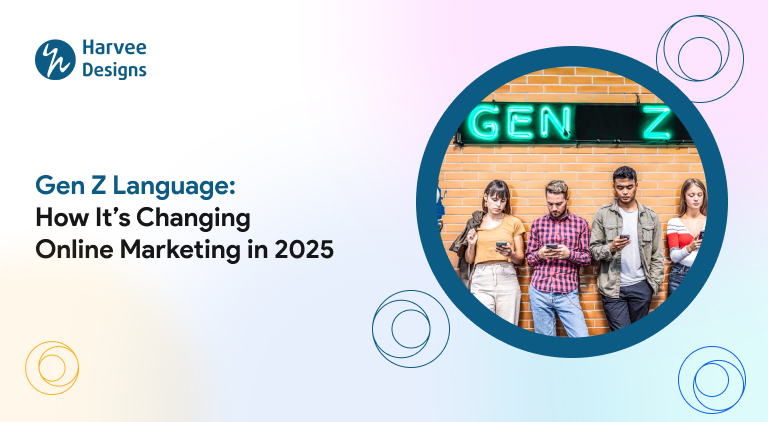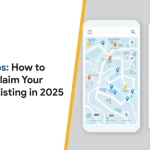
Gen Z Language: How It’s Changing Online Marketing in 2025
Gen Z, born between 1997 and 2021, has grown up surrounded by technology and social media.
They spend an average of three hours per day on social media, with 74% preferring mobile shopping over other devices. From their communication style to their choice of language, Gen Z navigates the digital world differently.
Gen Z’s way of speaking includes slang, short forms, and internet-inspired phrases, often shaped by social media trends. They prefer quick, expressive, and instant communication.
Marketers need to keep up with these trends to connect with Gen Z. Here are the key language trends for 2025 and how brands can use them in their marketing.
How Gen Z’s Way of Talking is Changing Marketing?
Gen Z talks in a fun, short, and real way. To connect with them, brands need to adjust how they communicate.
- Make Content Feel Real
Gen Z likes brands that talk the way they do using memes, casual language, and eye-catching visuals. Instead of formal ads, brands should create content that blends naturally into their social media feeds. - Make Marketing More Engaging
Polls, fun quizzes, and AI-generated replies grab Gen Z’s attention. Adding interactive elements makes marketing feel like a conversation, not just a one-way ad. - Use Influencers Who Speak Their Way
Gen Z trusts influencers who sound real. Brands that work with creators who naturally use Gen Z slang and trends can build a stronger connection with their audience. - Keep Customer Service Fun and Friendly
Nobody likes boring, robotic replies. Brands can make customer service more engaging by using chatbots with humour, casual responses, and even meme references. - Skip the Boring Ads
Traditional ads feel too stiff and scripted. Instead, brands should use short and relatable messaging that sounds like a real conversation.
Gen Z Language Trends 2025
1. Hyper-Visual Communication
Gen Z prefers communication that is quick, impactful, and visually engaging. Instead of long texts, they use emojis, GIFs, and memes to express themselves.
The rise of short-form video platforms like TikTok and Instagram Reels has made visual storytelling an essential part of their language.
For a more approachable and engaging presence, brands could use emojis and GIFs in email marketing, social media posts, and even customer interactions.
Take Duolingo, for example. Instead of sounding like a boring school lesson, they make learning fun with jokes, memes, and playful replies on social media. This keeps Gen Z engaged and makes the brand feel more like a friend than just an app.
2. The Evolution of Slang
Gen Z is always creating new ways to communicate, and by 2025, new slang terms will dominate digital conversations.
Some slang like “rizz” (meaning charm) and “delulu” (a fun way to call someone delusional) might still be around, but new terms will keep popping up from TikTok, Instagram, and gaming communities.
For instance, Swiggy adapts to internet culture by using fun and conversational language in their app notifications, like “Feeling snacky? Let’s fix that” instead of overly trendy phrases that might feel forced.
3. AI-Generated Lingo
As AI chatbots and language models become a bigger part of daily conversations, new AI-inspired slang will likely emerge.
For example, just like people say “Google it” to mean searching for something online, Gen Z might start using AI-related phrases for quick answers or assistance.
Brands can use AI to create content and chatbots that talk like Gen Z. When AI sounds natural and personal, it makes conversations more fun and improves customer service.
4. The Rise of “Genzspeak” in Brand Messaging
Gen Z prefers using informal, playful language. They value self-awareness and humor in marketing messaging. Companies that use a casual and funny tone will be more effective with this audience.
Netflix once tweeted, “Love is sharing a password.” It felt less like a brand talking and more like a friend making a joke. This playful and relatable message instantly clicked with users, turning a simple tweet into a viral moment.
Brands can make a stronger connection by keeping their tone casual and friendly, just like a real conversation.
Instead of sounding too formal, speaking in a natural, relatable way makes people feel more comfortable and engaged.
5. Ethical and Inclusive Language
Gen Z cares about fairness, diversity, and respect. They want brands to be socially aware and use language that includes everyone, no matter their gender, culture, or background.
Using inclusive language and supporting social causes helps brands connect with Gen Z authentically.
For example, Nike has embraced gender-neutral terms in its marketing and released campaigns promoting diversity and social justice.
6. Meme Culture Integration
Memes are like Gen Z’s secret language. They use them to react, share emotions, and connect online.
By 2025, memes will keep evolving—AI-generated and interactive memes will take over, making online conversations even more engaging.
For instance, McDonald’s launched the “Millennial” burger with kale and Sriracha Mac sauce, which quickly became a meme on Twitter. People joked about millennial stereotypes, saying the burger should also come with student loan forgiveness.
Brands can make their marketing more fun by using popular memes, but they need to keep it natural and true to their brand. If a meme feels too much like an ad, people might ignore it.
7. Abbreviations & Acronyms
Gen Z loves to shorten words and phrases for quick communication. Acronyms like “BTW” (By The Way), “YOLO” (You Only Live Once), and “TBH” (To Be Honest) are commonly used online. New ones will continue to emerge in 2025.
Spotify’s “Wrapped” campaign is a perfect example of using trendy, catchy words playfully. They incorporate terms like “FOMO” (fear of missing out) and “GOAT” (greatest of all time) to engage with young music lovers.
Adding trendy abbreviations to social media posts can help brands feel more relatable. But using them too much or in the wrong way can have the opposite effect.
8. The Influence of Gaming & Streaming Communities
Gaming has shaped the way Gen Z talks. Words from platforms like Twitch, Discord, and multiplayer games have become part of everyday conversations.
For example, people say “GG” (Good Game) to show respect after a competition, and “Clutch” when someone pulls off a last-minute win—whether in a game or real life.
Swiggy used gaming slang in its marketing by tweeting “Lag gaye?” during a major online sale, cleverly playing on both internet lag and food cravings. This instantly connected with Indian gamers, who often experience lag while playing.
Similarly, brands can use gaming terms like “GG” (Good Game) or “Noob” (beginner) in their ads, social media, or even product packaging to engage with the gaming community in a relatable way.
9. Digital Activism Language
Gen Z cares deeply about social and political issues, and it shows in the way they speak. Words like “climate anxiety” (worry about the future of the planet) and “social justice warrior” (someone who strongly supports social causes) have become common.
For example, a sustainable fashion brand could say, “No more eco guilt—our clothes are 100% recycled”, making it relatable for Gen Z shoppers who care about sustainability. As activism grows, brands that align with these values and speak their language will build stronger connections.
Conclusion
Gen Z’s language is always evolving, shaped by online trends and daily conversations. To connect in the right way, brands must use Gen Z lingo naturally, through humor, memes, and relatable messaging. When brands sound real, they build trust and stronger connections.
Contact us, Harvee Designs, the best digital marketing agency to connect with Gen Z in the right way and grow your brand’s influence.




